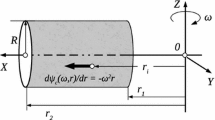Abstract
The work is devoted to solving the problem of correctly determining capillary pressure functions during mathematical modeling of oil displacement processes during flooding of productive formations. It is shown that the use of these functions, determined in laboratory conditions using traditional methods using capillarimeters and high-speed centrifuges, when modeling processes of oil displacement from low-permeability productive reservoirs can lead to significant errors. The work notes that when conducting laboratory studies in rock samples, there is no formation of residual oil in a stationary form, while in real conditions of displacement of oil by water from productive formations, residual oil is formed in the rock, and in low-permeability formations the residual oil saturation can reach 50% or more of the pore volume. To obtain capillary pressure curves that more reliably reflect the real processes in productive formations during their flooding, it is proposed that when preparing rock samples for laboratory research, it is proposed to provide for the process of preliminary formation of residual oil saturation in these samples. This will make it possible to more reliably simulate the processes of oil displacement during waterflooding of productive formations in real conditions, especially when developing low-permeability oil and gas reservoirs.
Similar content being viewed by others
REFERENCES
R. E. Collins, Flow of Fluids through Porous Materials (Reinhold Publ. Co., New York, 1961).
G. I. Barenblatt, V. M. Entov, and V. M. Ryzhik, Liquids and Gases Motion in Natural Stratums (Nedra, Moscow, 1984) [in Russian].
N. S. Gudok, N. N. Bogdanovich, and V. G. Martynov, The Way to Determine Physical Properties of Oil-Water-Containing Rocks: Student’s Book for Universities (Nedra-Biznestsentr, Moscow, 2007) [in Russian].
D. Tiab and E. C. Donaldson, Petrophysics: Theory and Practice of Measuring Reservoir Rock and Fluid Transport Properties, 2nd ed. (Elsevier Publ., Burlington, 2004).
A. M. Svalov, Inzh.-Fiz. Zh. 88 (3), 733–742 (2015). http://link.springer.com/article/10.1007/s10891-015-1248-9.
A. M. Svalov, Geol., Geofiz. Razrab. Neft. Gaz. Mestorozhd., No. 11(359), 47–51 (2021). https://doi.org/10.33285/2413-5011-2021-11(359)-47-51
Funding
The study was performed within financial support of the state assignment of OGRI RAS (registration number in the Ministry of Science and Higher Education of the Russian Federation FMMЕ-2022-0008, Theme No. 4).
Author information
Authors and Affiliations
Corresponding author
Ethics declarations
As author of this work, I declare that I have no conflicts of interest.
Additional information
Publisher’s Note.
Pleiades Publishing remains neutral with regard to jurisdictional claims in published maps and institutional affiliations.
Rights and permissions
About this article
Cite this article
Svalov, A.M. On Correct Accounting of Capillary Forces when Simulating Oil Displacement Processes when Flooding Productive Formations. Dokl. Earth Sc. (2024). https://doi.org/10.1134/S1028334X24601202
Received:
Revised:
Accepted:
Published:
DOI: https://doi.org/10.1134/S1028334X24601202




